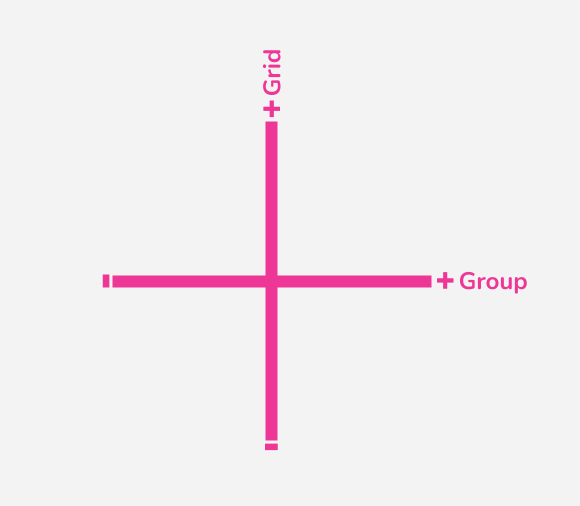Tim Senior
This insight post introduces key ideas about Wicked Problems, the Clumsy Solutions they demand, and the Messy Institutions best suited to their delivery
Wicked Problems
The world is complex, but there are many problems that are, in fact tame in nature even if they look very complicated. Our wealth of established disciplines, sectors, industries, professions, and so on, have developed particular ways of dealing with them. If you want to build an off-shore windfarm, there are specialist structural engineers and project managers you would turn to. There are other types of problem, particularly social issues, that are very different in nature. And these are Wicked Problems. A central piece of work in the field is that work of Rittel and Weber on urban planning issues, through which 10 characteristics of Wicked Problems were defined (1). Broadly grouped, Wicked Problems:
- Are hard to define. With wicked problems, different explanations call for different solutions. Defining the problem and devising a solution must be tackled at the same time (because the way you define the solution sets the problem, and vice versa).
- Have no clear solution. Solutions to wicked problems can only be good or bad (not right or wrong in a scientific hypothesis-driven sense). Judgements of success will differ and must be used to better understand the problem and potential solution.
- Have no stopping rule. Wicked Problems rarely go away as solutions themselves change the nature of the initial problem. Even good solutions will need renewal, and if done well, will lay the grounds for their own renewal.
- Are not a game. There’s no real-world trial run, as each attempt at a solution will have implications. Wicked Problems are not a game: They affect real people’s lives in real ways. Any response to a wicked problem matters and must be handled with care.
Climate Change
What does a Wicked Problem look like in the real world? Taking climate change as an example, we can look to different dominant policy positions and how to define the challenge and build routes to a solution (2). From one perspective, climate change is caused by excessive consumption and production, addressable only by recognising the shared, equal, and intrinsic value of all life, a force that be used to drive culpable organisations to change behaviour. A second policy story identifies a lack of global planning as the problem, pointing to the need for global markets to be steered towards technologies and energy resources that do not emit greenhouse gases. Our third and final story is that climate change is exaggerated, pushed by hapless idealists or greedy bureaucrats – it is up to entrepreneurial individuals and businesses in a free market to respond if and when it affects them.
Wicked Problem theorists point out that, historically, all three policy stories have made claim to using reason, logic and science to argue their world view and advocate for their preferred solution. Not only is it hard to prove or falsify (in a scientific sense) one position in favour of another, but they also remain resolutely independent (they’re non-substitutable or reducible). Certainly, no proponent of one is going to agree with a proponent of another. The strength of each story is, as you might expect, historically contingent, with the third – climate change denial – increasingly hard to justify. This serves to remind us just how bound Wicked Problems are to people in a specific time and place; our discussion about climate change today differs from 10 years ago, and will look very different again 10 years hence. What’s essential to recognise in these different policy stories is that others are not being illogical or perverse (on the whole), but may just have fundamentally different world-views (3). In short, Wicked Problems are hard to define, have no clear solution, have no stopping rule, and are not a game.
A Cultural Theory Perspective
Because wicked problems, and our responses to them, ultimately concern human behaviour, it can be helpful to turn to the social sciences for understanding. At supersum we’re particularly interested in “Cultural Theory”, a field of research originating with the late Dame Mary Douglas. Cultural Theory concerns itself with different social dimensions that together generate the enormous diversity of social and cultural life as we know it. The whole idea builds on two dimensions of sociality. The first is GRID, which concerns the level of differentiation between people: High Grid emerges when roles are assigned (e.g. according to education, social status or gender); Low Grid when roles are earned (e.g. according to ability or through fair competition). The second is GROUP, which concerns the level of connection between people: High Group emerges when there is a strong bond (e.g. a strong commitment to others); Low Group when people decide to “go it alone”.

Grid Group
Cultural Theory builds on two dimensions of sociality: Grid (the level of differentiation between people); Group (the level of connection between people)
When these two axes are put together, four different fundamental social building blocks emerge: Hierarchy, Egalitarianism, Individualism, and Fatalism. These four building blocks are active in every conceivable social domain, each operating to a stronger or weaker extent, but always in tension with each other. It is through those interactions that this small number of building blocks gives rise to the endless social and cultural diversity that we see around us. It is in that diversity that we see extraordinary interactions between people’s beliefs, values, interests and emotions – all critical to understanding the structure and perception of social life. So, looking back at the climate change policy stories: The first describes an Egalitarian response to structural inequalities enforced by hierarchies and unchallenged by individuals; the second story describes a strengthening of Hierarchy to tackle a failure of global planning caused by rampant individualism; the third story describes a turn to Individualism at the perceived irrelevance of policy makers and shared public interests. Where does Fatalism come into this?: ‘Why act on climate change; there’s nothing we can do’ (a policy non-story, albeit an important one).

Building Blocks
The Grid – Group axes combine to generate four fundamental building blocks: Hierarchy, Individualism, Egalitarianism, and Fatalism
The Origin of Clumsy Solutions
Cultural Theory (3, 4, 5) offers us a way both to look into Wicked Problems and find a way out. On the one hand, it helps us to characterise the social nature of Wicked Problems and the different positions people and institutions take in defining the problem-solution space; where opposing, seemingly incompatible positions emerge, a Wicked Problem is surely present. On the other hand, it helps identify the ‘social material’ at play in finding a solution that works for more of those involved than isolated groups adhering to this or that position. Cultural Theory argues that Wicked Problems can, in fact, only be addressed effectively through responses that dynamically combine these four building blocks of social life. To exclude any one is to set-up a solution that will fail, because it ignores key ways in which people (who are different from you) experience and understand the world. To paraphrase Barry Schwartz: Each way of Life undermines itself without the other. Individualism would mean chaos without hierarchical authority and shared solidarities. Similarly, hierarchies are stagnant without the creative energy of individualism, incohesive without the binding force of equality, and unstable without the passivity and acquiescence of fatalism. It is these fragile dynamic alliances that can produce resilient, adaptive and flexible responses to a changing social world. In this light, “clumsy solutions” are so-called not because they’re unreliable or unstable, but because they take account a plurality of perspectives and rationales outside of each other’s “business as usual”. They’re pluralist not because pluralism is ‘nice’, but because solutions are otherwise vulnerable.

Clumsy Solutions
Clumsy Solutions creatively combine all four fundamental social building blocks
Returning to climate change briefly, what might a clumsy solution look like? It could, for example, include an expansion of renewable energy that “mix creative market forces with governmental planning; also open up many possibilities for local and civic action.” (4) The perceived failings of the Kyoto protocol (with its focus on government-led, hierarchical routes to reduce greenhouse emissions), and the inclusion of more collaborative and bottom-up approaches in the 2015 Paris agreement may reflect this wisdom. It certainly suggests that a pluralism in our response to climate change is going to be important moving forward.
The Role of Messy Institutions
If your aim is to dynamically combine these four building blocks in a clumsy solution, then, in most cases (but not all), you will likely need to support a multi-partner collaborative process that can bring those interactions to life. Collaborative models and the organisations that support them abound (…design thinking, participatory action research, consensus conferences, town hall meetings…), but not all can generate clumsy solutions because they are themselves insufficiently clumsy; in the same way that Cultural Theory can shed light on the problem and the solution, it too can shed light on the collaborative and institutional mechanisms through which those problems are understood and possible solutions generated. In any collaborative process, for example, you will need to ask the following questions: Who participates in a solution-finding process? Where should we meet to do this work? How will we divide up tasks? What role should technology play? What information should we use? and so on. Each way of life (encapsulated by a single building block) offers a different answer. If we respond to the question “Who should contribute?”, should only those individuals who want to take part be included (Individualism), or everyone who is implicated (Egalitarianism), or only experts and professionals consulted (Hierarchy), or should participants be picked at random (Fatalism)?
From a Clumsy Solution perspective, if your solution-seeking process to a wicked problem is to consult only experts, or endlessly seek group consensus in all decision making, or let the most-outspoken individuals dominate, then the solution you develop is unlikely to be a responsive and long-term one; it may perfectly satisfy the needs and ambitions of your own organisation, but It’ll only be a solution, not a clumsy solution. The final element, therefore, is the case to be made for organisational structures and cultures fit for the demands clumsy solutions make. In the same line of argument as before, an organisation that is extremely hierarchically organised, dominated by maverick leadership, or riddled by an endemic fatalism, is going to struggle. A Messy Institution is one that considers how the four social solidarities can can sustain a culture able to diagnose wicked problems, support the collaborative partnerships essential to generate Clumsy Solutions, and then deliver them into the world. We are developing supersum to be a Messy Institution, a property that will be explored in future insight posts.
References
1) Rittel, H.W.J. and Webber M.M. (1973) ‘Dilemmas in a General Theory of Planning’, Policy Sciences (4), 155-169
2) Verweij, M. and Thompson, M. (eds.) (2006) Clumsy Solutions for a Complex World: Governance, Politics, and Plural Perceptions. New York: Palgrave Macmillan
3) Douglas M. (ed.) (1982) Essays in the Sociology of Perception. London: Routledge
4) Douglas M. (1987) How Institutions Think. London: Routledge.
5) Thompson M., Ellis, R., Wildavsky, A. (1990) Cultural Theory. Boulder: Westview press
6) Ney, S. and Verweij, M. (2015) ‘Messy institutions for wicked problems: How to generate clumsy solutions?’, Environment and Planning C: Government and Policy (33), 1679-1696
